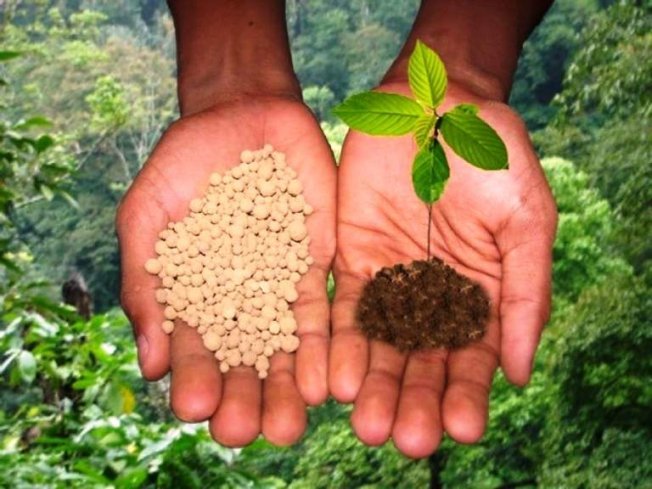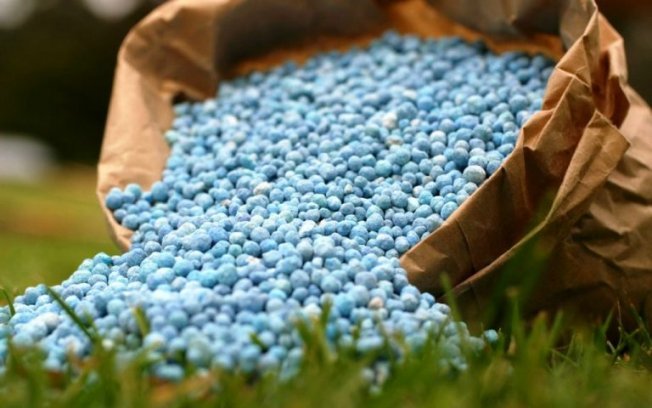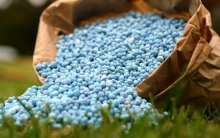Agronomist Kurt Woolfolk: what mineral fertilizers are applied to increase yields

The volume and quality of the harvest from a field or garden depends on how properly we care for the plants. And in order to get the maximum benefit from the crops grown, you need to know what mineral fertilizers are applied in the fall and spring, and what their features are.
Content:
- What is meant by mobility and immobility?
- On the importance of balanced formulations
- How often should a soil test be done?
- Signs of mineral deficiency
What is meant by mobility and immobility?
For normal development and fruiting, vegetable crops require the presence of three main substances: nitrogen, phosphorus, and potassium. But if we are talking about what mineral fertilizers are added to the soil, then we cannot discount secondary macroelements and microelements.
When studying the topic, it will be useful to get acquainted with the opinion of Kurt Woolfolk, a leading specialist and senior agronomist at Mosaic. Choosing mineral complexes, it is recommended to pay attention to the fact that only in the case of the correct ratio of all components of the mineral fertilizer, including sulfur, boron and zinc, can a significant increase in yield be expected, i.e. the applied drug will work truly effectively.
When creating a nutrition program for vegetable plants, an agronomist or amateur vegetable grower must realize that each of the elements forms a chemical form that determines its mobility or immobility in the soil.
Kurt Wolflck emphasizes that the mobility of sulfates, nitrates, chlorides and boron depends on the frequency and volume of precipitation, as well as on the structure of the soil.
The fertility of the soil can be judged by the content of mobile nutrients in it. At the same time, the agronomist emphasizes the importance of the presence of sulfur, which can be absorbed by plants only in oxidized form (sulfate). The need to use sulfur on different types of soil is determined by the ability of sulfuric acid salts to dissolve phosphorus contained in sparingly soluble compounds and form easily accessible forms, i.e. increase its uptake by agricultural crops.
During the oxidation process, sulfur also accelerates the process of release into solution and increases the availability of substances such as:
- Fe;
- Mg;
- Kalium.
It has been experimentally proven that some crops cannot provide rapid transport of sufficient amounts of sulfur compounds to all parts of the plant. Ultimately, sulfur deficiency occurs in plants during the ripening stage of the crop. Naturally, this may reduce the yield.
There is a way out, or rather, an option to prevent such a situation: to avoid the occurrence sulfur deficiency Two forms of sulfur should be used: elemental and sulfate.
On the importance of balanced formulations
Zinc is a component found in many enzymes. It has a beneficial effect on chlorophyll synthesis and ensures stable growth and development of crops. But its mobility in the soil can be described as limited; it is related to the pH level.An increase in pH leads to a decrease in the mobility of the element.
The cause of zinc deficiency in the initial stages of plant development can be:
- cold weather;
- excessive humidity;
- cloudy days.
During analysis, agronomists regard an increased content of phosphorus in the soil as evidence of a lack of zinc and a lack of balanced nutrition.
Many manufacturers of mineral complexes have developed their own lines of fertilizers. A balanced combination of basic plant nutrients in granular fertilizers makes it possible to evenly distribute nutrients throughout the beds and helps to increase the digestibility of nutrients.
If the year turned out to be fruitful, then farmers should understand that this year a large amount of nutrients was removed from the soil. The desire to repeat a successful year, or to achieve better results, means that it will be necessary to change (improve) the condition of the soil in accordance with the programs drawn up for the crops that are planned for cultivation.
Zinc, sulfur, boron are elements that have a direct impact on the speed of development of the root system and early tillering. Strong, healthy plants have higher resistance to pathogens of various diseases and are potentially capable of producing high yields.
Kurt Woolfolk emphasizes that approximately 60% of the harvest can be achieved through rational investment in a balanced diet of vegetable and grain crops.
Let's watch a video about how long fertilizers applied to the soil last:
How often should a soil test be done?
Soil analysis allows you to obtain a realistic assessment of fertility and timely take measures to increase it.The work of MOSAIC agronomists and consultants is aimed at determining the exact amount of micro- and macroelements required for growing different crops.
Experts believe that it is very important to know the best way to apply fertilizers, the speed of the process, and also clearly understand the purposes for which these mineral complexes are intended.
Signs of mineral deficiency
Kurt Woolfolk shares information that a deficiency of certain nutrients in the soil can be inferred by changes in the appearance of plants.
Among the alarming symptoms, the agronomist notes:
- growth slowdown;
- the appearance of an edge burn on the sheets;
- interveinal chlorosis;
- dying of shoots, yellowing of leaves, their falling.
At the same time, it is very important to know what type of soil is on your site, to figure out which elements may initially be in short supply.
All these problems can be prevented by knowing what mineral fertilizers are applied in autumn and spring, as well as by observing their dosage.
We invite you to watch a useful video about what mineral fertilizers are applied to increase yields and how their quantity is determined:






